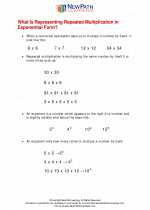Icosahedron
An icosahedron is a polyhedron with 20 equilateral triangle faces, 30 edges, and 12 vertices. It is one of the five Platonic solids, which are convex polyhedra with equivalent faces and vertices.
Properties of an Icosahedron:
- Number of Faces: 20
- Number of Edges: 30
- Number of Vertices: 12
- Face Shape: Equilateral Triangle
- Symmetry: icosahedral symmetry
Formulas for Calculating Icosahedron Properties:
To calculate the surface area (A) of an icosahedron with edge length (a), you can use the formula:
A = 5 * √3 * a2
To calculate the volume (V) of an icosahedron with edge length (a), you can use the formula:
V = (5/12) * (3 + √5) * a3
Study Guide for Icosahedron:
- Understand the definition of an icosahedron and its properties (faces, edges, vertices, etc.).
- Learn the formulas for calculating the surface area and volume of an icosahedron.
- Practice identifying and drawing icosahedrons.
- Explore real-life examples and applications of icosahedrons, such as in architecture and molecular geometry.
- Master the concept of icosahedral symmetry and its significance.
By understanding the properties and characteristics of an icosahedron, you will be well-equipped to solve problems and work with this geometric shape in various mathematical and practical contexts.
.◂Math Worksheets and Study Guides Sixth Grade. Repeated Multiplication to Exponents
Study Guide Repeated Multiplication to Exponents
Repeated Multiplication to Exponents  Worksheet/Answer key
Worksheet/Answer key Repeated Multiplication to Exponents
Repeated Multiplication to Exponents  Worksheet/Answer key
Worksheet/Answer key Repeated Multiplication to Exponents
Repeated Multiplication to Exponents  Worksheet/Answer key
Worksheet/Answer key Repeated Multiplication to Exponents
Repeated Multiplication to Exponents 

 Worksheet/Answer key
Worksheet/Answer key
 Worksheet/Answer key
Worksheet/Answer key
 Worksheet/Answer key
Worksheet/Answer key

The resources above cover the following skills:
Number and Operations (NCTM)
Understand numbers, ways of representing numbers, relationships among numbers, and number systems.
Develop an understanding of large numbers and recognize and appropriately use exponential, scientific, and calculator notation.